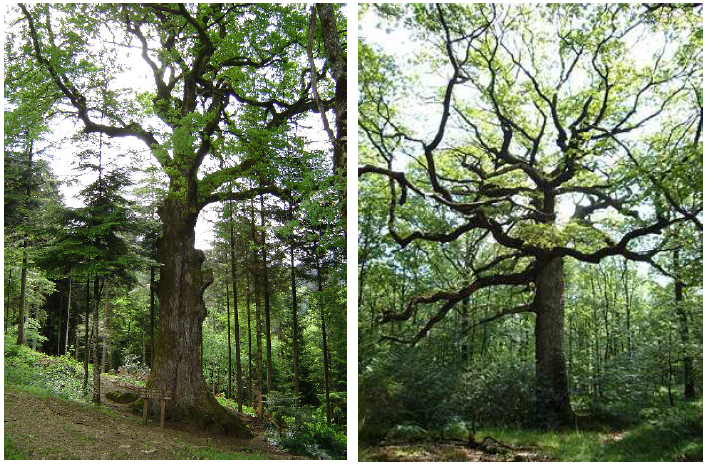2) Oak Goddesses: the Dervonnae
The existence of Mother Goddesses personifying oak is evidenced by an inscription found in Milan (Italy), in the territory of the Insubres, dedicated to the Matronae Dervonnae, whose byname* is Celtic, for it is based on the Gaulish root dervo-, ‘oak’, similar to Old Irish daur, genitive daro/dara, Welsh dâr and Old Breton dar, ‘oak’, derived from a common Celtic word *daru designating oak. The inscription is the following: Dervonnae Matronis Dervonnis C(aius) Rufinus Apronius vslm, ‘To the Dervonnae Matronae, C(aius) Rufinus Apronius paid his vow willingly and deservedly’.1057 The same Mother Goddesses are given the Roman divine title of Fatae in an inscription from Brescia (Italy): Fatis Dervonibus vslm M(arcus) Rufinius Severus, ‘To the Fatae Dervonae, Marcus Rufinius Severus paid his vow willingly and deservedly.1058 In these two inscriptions, the dedicators are Roman citizens bearing the tria nomina. Without going into detail, it is clear that oak was a sacred tree for the Celts and played a prominent role in their religion, tradition and imagery.1059 Pliny indeed reports that the Gaulish people held nothing more sacred than oak (robur).1060 He specifies that the druids chose oak-woods for their groves and used oak-boughs to perform the religious rites. Moreover, Lucan states that the druids ate the fruit of oak (acorn) in rites of divination.1061 It is also worth noting that the ex-votos discovered at the Source-de-la-Seine are all made out of oak-wood. This wood was certainly chosen on purpose for its symbolic, sacred and magical qualities. Because of its imposing size, its large trunk, boughs and dense foliage, its impressive longevity and its majesty, oak symbolized force and wisdom and was regarded as the ‘Axis of the World’ in many ancient religions (fig. 44).1062 It is therefore not surprising to find goddesses personifying the strength, wisdom and sacredness of this tree.
